Derby day on Merseyside is always an event that both sets of fans are always passionate about, despite the form their respective clubs might be in. Last season, Liverpool fans took great pride in beating the Blues 1-0 at Anfield after an outrageous fluke goal from Divock Origi, who capitalised on a mistake made by Jordan Pickford in the 96th minute. On the other hand, Evertonians will happily mention that the 0-0 draw at Goodison Park last season was where Liverpool went from first place in the league to second, where they were unable to recover, eventually losing the Premier League title by one point.
With Manchester City beating Burnley comfortably 1-4 earlier in the day, Liverpool knew that dropping points against Everton would give Manchester City some much-needed momentum to attempt to close the gap. Everton needed the points, as their start to the Premier League campaign has left much to be desired, with 14 points from 14 matches before their visit to Anfield; it was quite clear that a lot was riding on this fixture for Marco Silva, who was under a lot of pressure by the board and fans alike to start getting results.
This tactical analysis will analyse Liverpool’s change in formation, why Everton were such disarray defensively, and how the 5-2 match played out.
Lineups
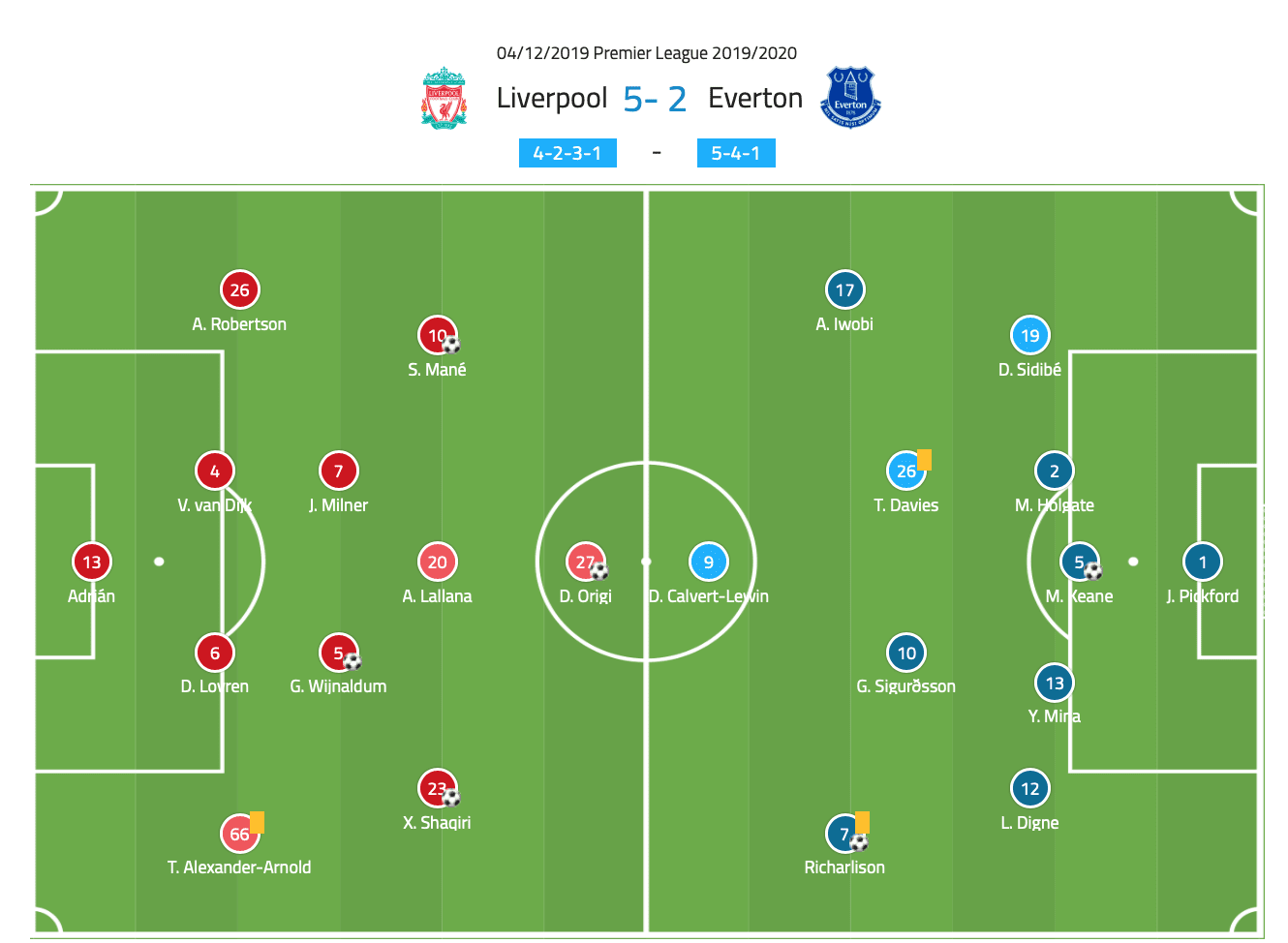
Jürgen Klopp made quite a few changes to his starting XI and formation. Klopp’s favoured 4-3-3 surprisingly made way for a 4-2-3-1 With Alisson’s reckless red card against Brighton, he was suspended for the match, which saw Adrián start in goal with a back four of Trent-Alexander Arnold, Dejan Lovren, Virgil van Dijk, and Andrew Robertson ahead of him. The midfield and the forward line was where the surprises from Klopp came from. Captain Jordan Henderson was benched in favour of Georginio Wijnaldum and James Milner in a double pivot in midfield. The front four saw only one of Liverpool’s undisputed starters, Sadio Mané start on the left, with Adam Lallana, and Xherdan Shaqiri, who had not started a league game since January, start alongside him. Origi lead the lineup top as a lone striker.
Silva, on the other hand, named an unchanged team to the one against Everton’s 2-1 loss against Leicester City. Behind a back five of Djibril Sidibé, Mason Holgate, Yerry Mina, Michael Vincent Keane, and Lucas Digne stood in front of Pickford in net. Central midfield consisted of Tom Davies and Gylfi Sigurðsson, with Alex Iwobi and Richarlison on the right and left flanks respectively and Dominic Calvert-Lewin started up top as the #9.
To press or not to press?
From the kickoff whistle, it was clear that the Everton players were not on the same page when it came to pressing. Everton’s 5-4-1 was all over the place because the backline seemed to have a different tactical idea to what the frontline was doing.
Before Everton’s switch in formation (more on that later), the back five were playing an extremely high line. The reasons teams play a high line is to give the opposition less space and time to play in. By pushing up so high, the team playing a high line will then deploy a type of press system, which enables them to win the ball back quickly.
Silva was fearless in employing a high press system against Liverpool. More often than not, teams playing against Liverpool will sit deep and try and absorb as much pressure as possible. That being said, it is difficult to analyse if Silva’s press was effective. Why? Because only half of his team deployed it.
The backline deployed the high line, but the front players were sitting, allowing Liverpool’s back four the time and space that Everton were trying to nullify. No cohesion tactically made it so simple for Liverpool.
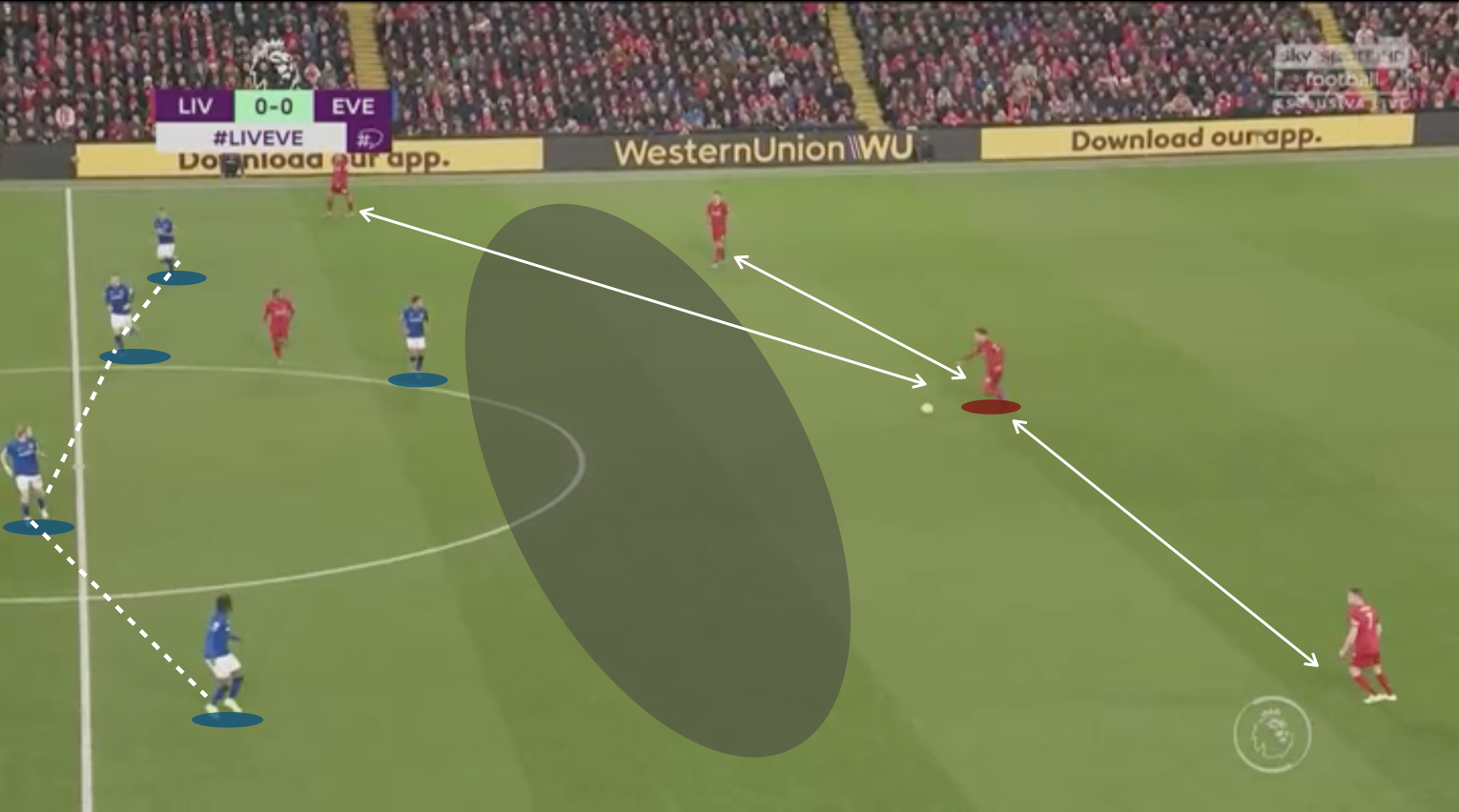
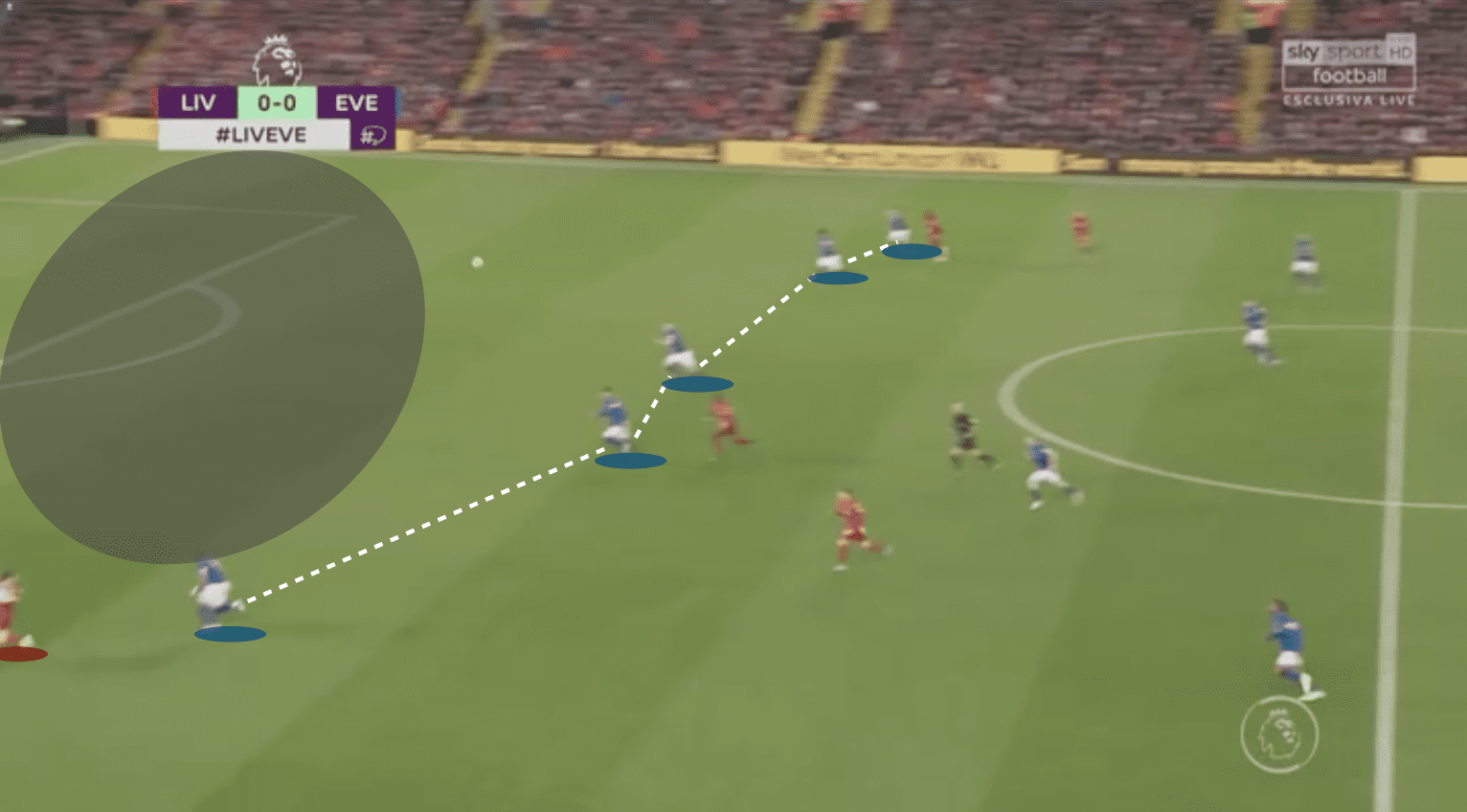
For the first thirty-five minutes or so, Everton’s backline stayed high, but their front line failed to push up with them. The aspect of denying space is what makes a highline and press system effective, and Everton failed to do so.
The reason as to why Everton were so incohesive is a bit unclear. It may have been Silva’s inability to communicate to his players what he wanted exactly; the players lack of communication with each other, or tiredness. Everton looked incredibly tired against Leicester City towards the end of the match, and Silva using the exact same XI three days later in a derby surely did not help the situation.
5-4-1 to 4-4-2
After about thirty-five minutes, it was clear to everyone watching the match that a back five for Everton was just not working. Silva decided to take off Sidibé and replace him with Bernard.
Sidibé’s match was one to forget, and he was the obvious choice for Silva to take off. After a decent showing against Leicester City, it was hoped that he’d continue to improve. Rather than building on his performance at the King Power, Sidibé struggled to cope with Liverpool’s front line, particularly Mané, who he was directly up against.
Bernard coming in allowed Everton to shift into a 4-4-2, which was the formation they remained in for the rest of the match.
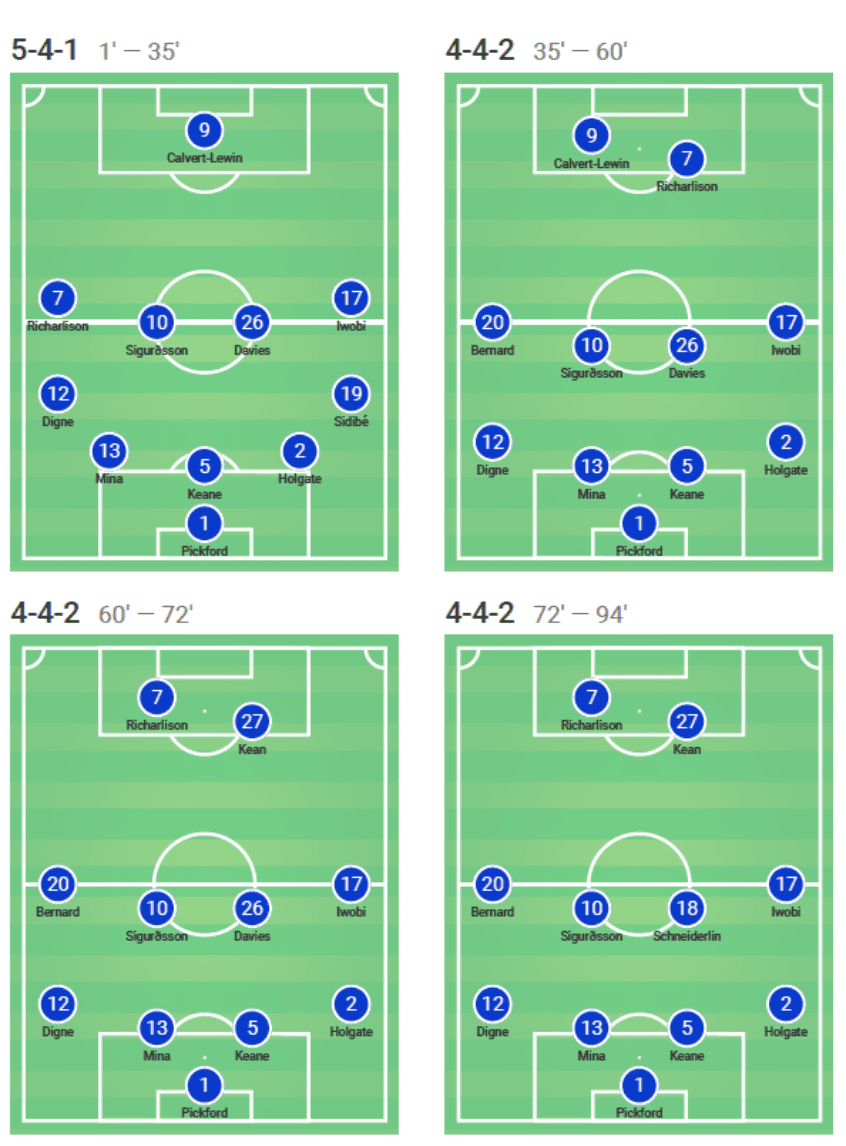
The shift to the 4-4-2 was better for Everton. While in possession, Calvert-Lewin was struggling up top as a lone striker. When one of the centre-backs attempted a long ball to Calvert-Lewin, he’d struggle to win the aerial duel against both Lovren and Van Dijk. If he did win it, the second ball would usually fall straight to a Liverpool player. Because Iwobi and Richarlison were very wide, and Liverpool were in a 4-2-3-1, it was essentially Calvert-Lewin against four Liverpool players (Van Dijk, Lovren, Milner, and Wijnaldum). 4vs1 are never good odds.
Even when Everton ditched the long balls, and resorted to buildup play, Calvert-Lewin was still isolated. When either Iwobi or Richarlison received the ball on the flanks, Liverpool’s respective fullback and one of the two midfielders in the pivot would be pressing them, at minimum. More often than not, the respective winger joined in to defend as well. Again, 3vs1 are not great odds.
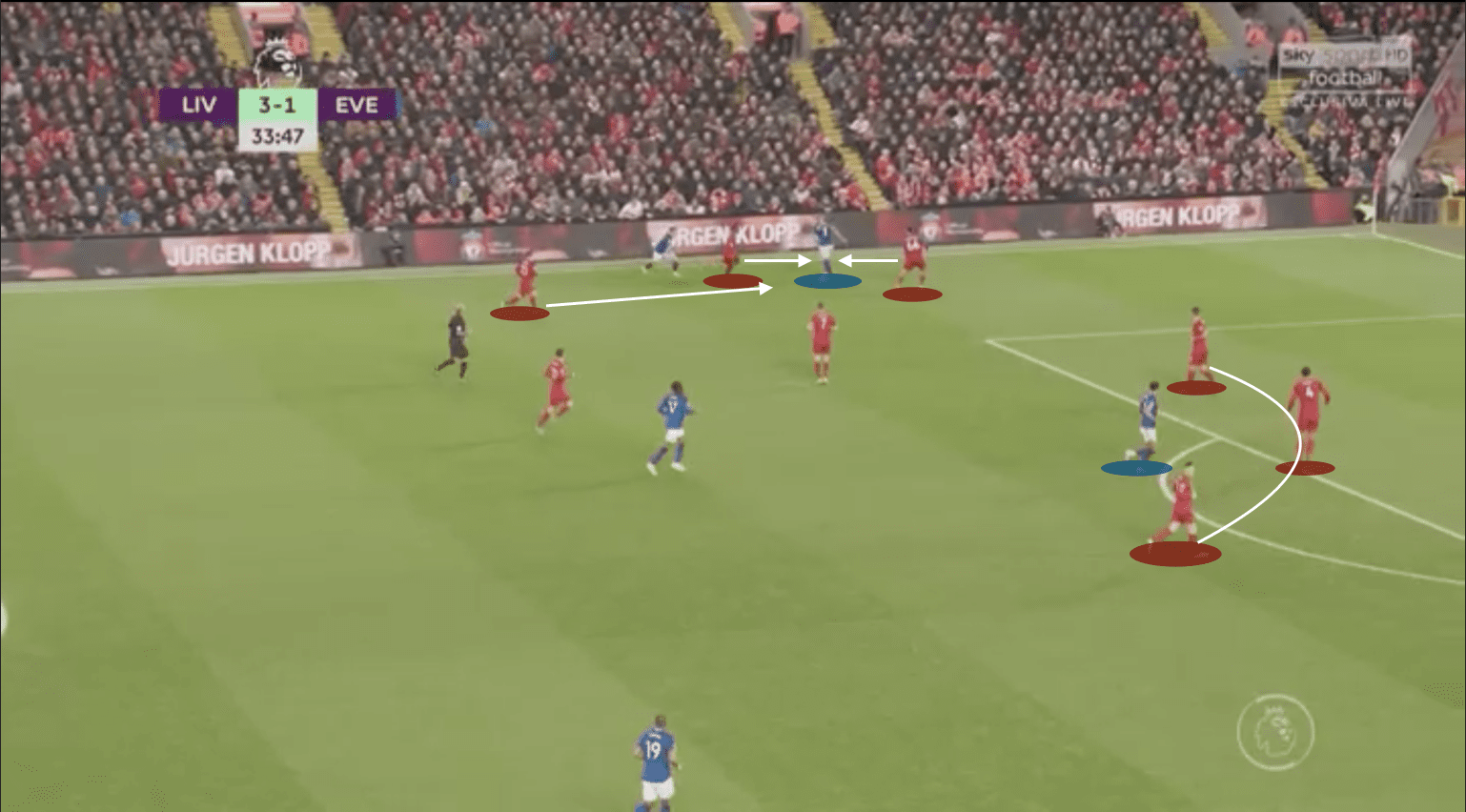
The 4-4-2 allowed Calvert-Lewin to have more support. Richarlison moved up as the second striker when Bernard was introduced to the match. When Calvert-Lewin was substituted, Moise Kean occupied his role as the second striker alongside Richarlison.
Having two strikers up top made Everton more dynamic, and made attacking easier, as the two players were able to play off one another, and not have such a numerical disadvantage against Liverpool.
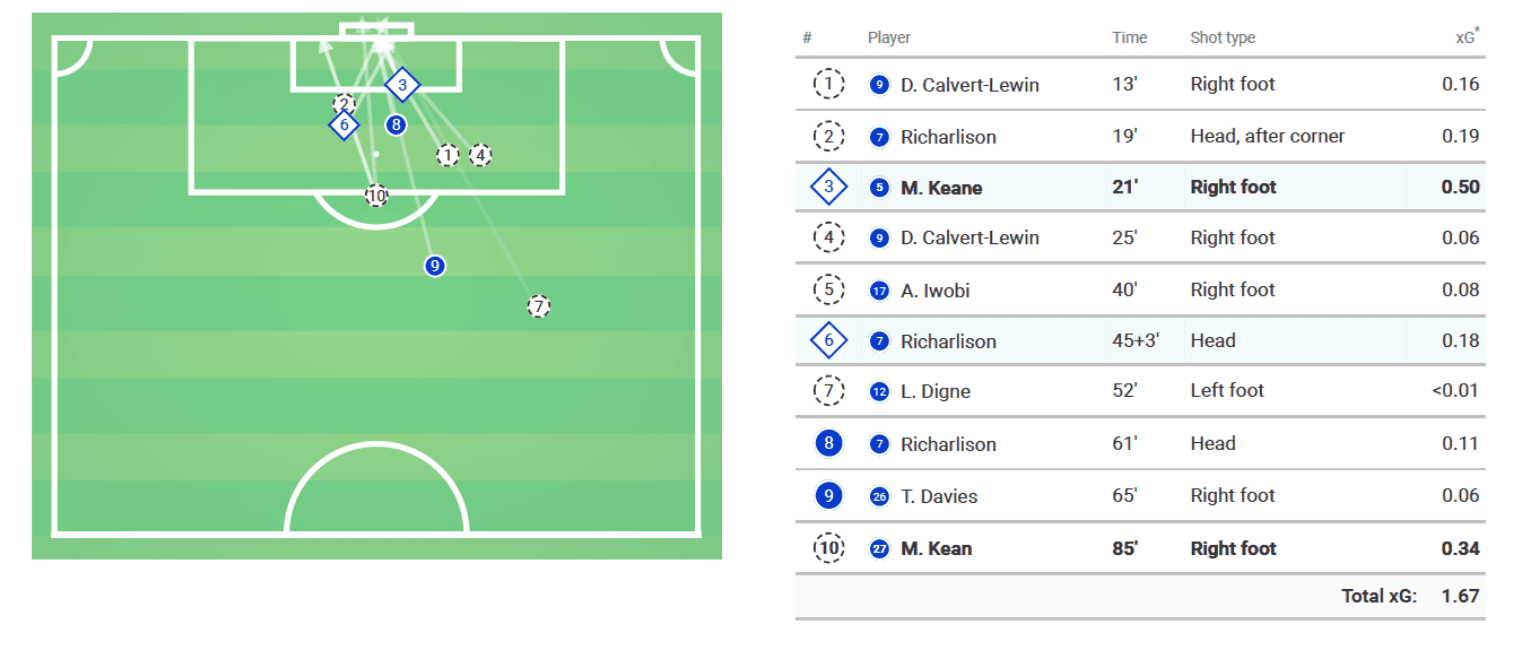
Liverpool’s 4-2-3-1
Fabinho has arguably been Liverpool’s best player this season, so when he picked up an injury against Napoli in the Champions League, it was a cause for concern. Liverpool have been so reliant on his ability, both in defence and attack, and while Liverpool have an abundance of talented midfielders, none are quite like the Brazilian.
When Fabinho first came from Monaco, Klopp used the 4-2-3-1 as a way to adapt him to the Premier League. It was the formation he was most used to playing in Ligue 1, and having someone beside him in that double pivot gave him an extra bit of protection.
Now, it seems Klopp has resorted to the 4-2-3-1 for the opposite reason; to offer that extra protection without Fabinho in the side.
Furthermore, the 4-2-3-1 allows a bit more of an attacking output. Liverpool have had a lot of nervy 2-1 wins as of late. The extra attacker in the #10 role (Lallana against Everton) gives Liverpool that extra dynamism that they have lacked recently. It was especially smart of Klopp to play a formation with a #10 role since Roberto Firmino, who usually acts as the link between midfield and attack, was benched.
Leaky Liverpool
Last season, Liverpool were consistently praised for their defensive performances. So far, they have conceded 14 goals. This time last season, they had conceded only six. The match against Everton showed that their main defensive issues was crosses.
Liverpool conceded 21 crosses against Everton, an insane amount. For comparison, Everton only conceded four. Eight of these 21 saw Liverpool failing to clear them, with one resulting in Richarlison’s goal.
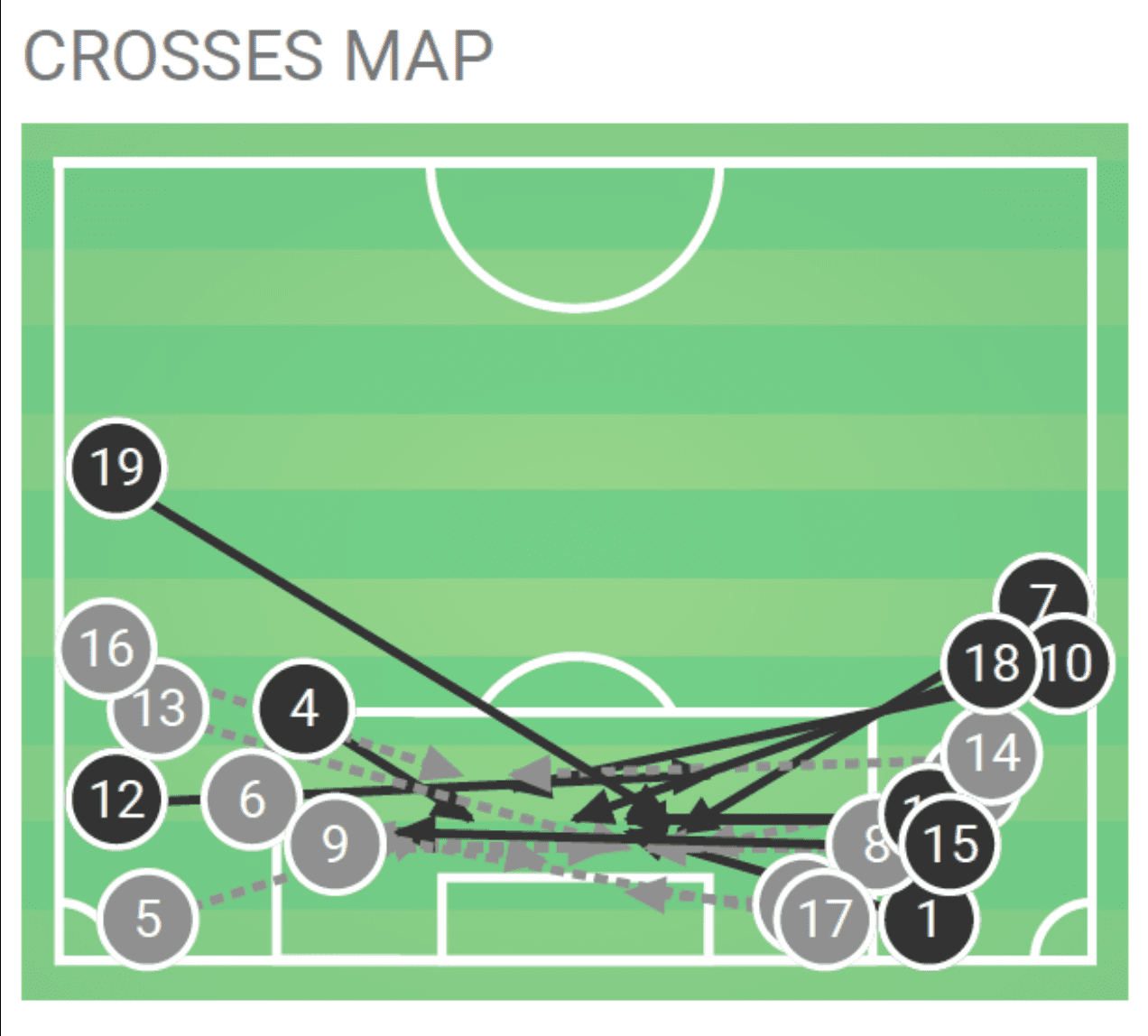
Part of the reason Liverpool have been conceding so many crosses is their fullbacks. Both Alexander-Arnold and Robertson love to push high, which sometimes does not allow them time to get back in time if there is a turn in possession. Liverpool have found a way to deal with their fullbacks bombing forward, which does not leave them overly exposed, but it does not necessarily stop crosses from coming in.
Furthermore, in dead balls that use crosses (freekicks), opposition have become wary of Van Dijk. Having an insanely good aerial duel win percentage, he usually is able to head the crosses away. However, Everton would often surround Van Dijk in an attempt to physically disallow him from winning the Everton. Van Dijk, whose average aerial duel win percentage in the past five matches has been 75%, only won 62% from defensive positions. It was a good tactic from Everton to try and nullify one of the Dutchman’s biggest strengths.
Merseyside remains Red
Analysing both teams’ tactics, and using analysis to look at both their strengths and weaknesses, it is clear that the two teams competing in the Merseyside derby could not be more opposite in terms of form, ambitions, and expectations.
The long-awaited win at Anfield for Everton will have to wait; the team has not been able to beat Liverpool in twenty-years at Anfield. However, the wait for their next match to try and end this comes sooner than expected. Rather than waiting until next season, Everton will be back at Anfield to face their rivals in the third round of the FA Cup on the 5th of January.
Liverpool will be ecstatic to have kept the gap between them and Manchester City at eight points. They have such a hectic schedule in the upcoming month, specifically with the Club World Cup matches in Qatar, that they need to gain as many points as possible, as its almost inevitable that they will drop points in the December/January period.
This loss has allowed Everton to drop in the relegation zone. While it’s unlikely, that team being relegated would be a massive failure based on the amount of money invested in that team. Furthermore, their upcoming fixture list is unkind to them, with four of their next league fixtures being against Chelsea, Manchester United, Arsenal, and Manchester City. With news that Silva has been sacked by the club, the club need to find a manager that will have some momentum, and keep up a string of results that will get them away from the bottom three.

If you love tactical analysis, then you’ll love the digital magazines from totalfootballanalysis.com – a guaranteed 100+ pages of pure tactical analysis covering topics from the Premier League, Serie A, La Liga, Bundesliga and many, many more. Buy your copy of the December issue for just ₤4.99 here






Comments